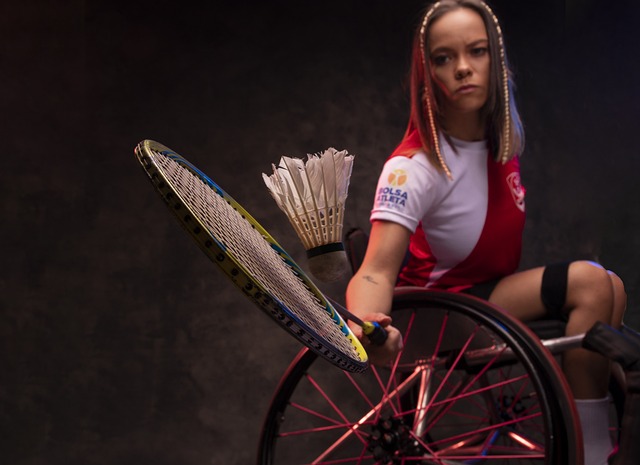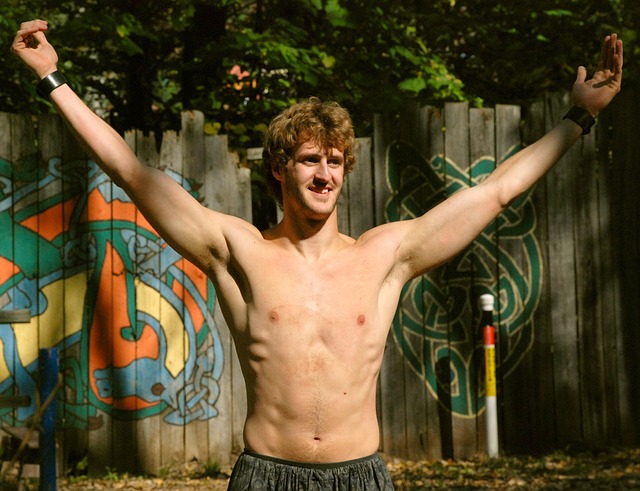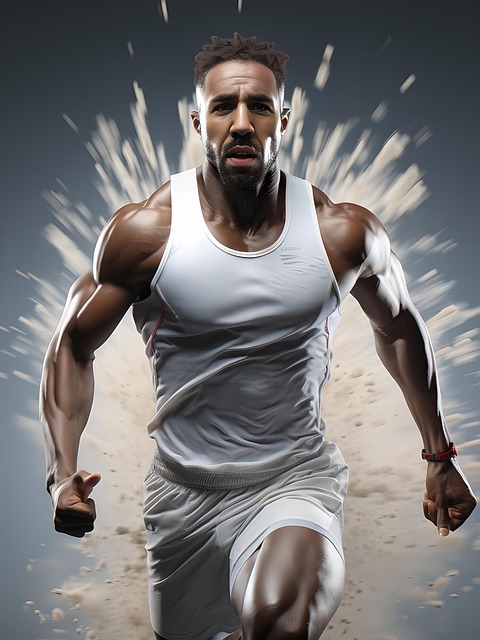Holistic regenerative medicine for athletes is a revolutionary approach integrating nutrition, exercise physiology, massage therapy, and stress management to optimize recovery, enhance performance, and prevent future injuries. Techniques like manual therapy, myofascial release, mindfulness meditation, and yoga accelerate healing, improve flexibility and strength, and foster mental resilience, reducing downtime and empowering athletes to reach their full potential through injury recovery therapy.
“In today’s competitive sports landscape, athletes are constantly seeking edge strategies for optimal performance and rapid recovery. Holistic regenerative approaches offer a promising alternative to conventional methods, focusing on the interconnectedness of mind, body, and spirit. This article explores these innovative practices, highlighting the benefits of injury recovery therapy in enhancing sport performance. From natural rehabilitation techniques to integrating mind-body practices, we delve into successful case studies, showcasing how holistic regenerative approaches are revolutionizing athletic wellness.”
- Understanding Holistic Regenerative Medicine for Athletes
- Benefits of Injury Recovery Therapy in Sport Performance
- Natural and Alternative Treatments for Athletic Rehabilitation
- Integrating Mind-Body Practices for Optimal Athlete Wellbeing
- Case Studies: Successful holistic regenerative approaches in elite sports
Understanding Holistic Regenerative Medicine for Athletes

Holistic regenerative medicine for athletes is a comprehensive approach that goes beyond traditional treatments, focusing on the entire individual—mind, body, and sometimes even spirit. It recognizes that an athlete’s performance and recovery are interconnected with their overall health and well-being. This method aims to facilitate injury recovery therapy by addressing not just the physical symptoms but also the underlying causes of pain or decreased performance.
By integrating various disciplines such as nutrition, exercise physiology, massage therapy, and stress management, holistic regenerative approaches strive to optimize athletes’ recovery processes. These strategies are designed to minimize downtime, enhance athletic performance, and prevent future injuries. In essence, it’s about nurturing the athlete’s body and mind to achieve a state of balance and resilience.
Benefits of Injury Recovery Therapy in Sport Performance

Injury recovery therapy has emerged as a game-changer in athletic rehabilitation, offering numerous benefits that extend far beyond mere healing. By holistically addressing the physical and mental aspects of an athlete’s well-being, this approach enhances overall sport performance. Techniques such as manual therapy, myofascial release, and targeted exercises not only accelerate injury repair but also improve flexibility, mobility, and strength, enabling athletes to regain their full range of motion and return to competition faster.
Moreover, injury recovery therapy goes beyond the physical realm, focusing on mental resilience and stress management. It equips athletes with coping strategies to handle pain and discomfort more effectively, boosts confidence levels, and fosters a positive mindset—all crucial factors in high-performance sports. By integrating mind and body, this therapeutic approach empowers athletes to optimize their potential, ensuring they not only recover from injuries but also thrive in their athletic pursuits.
Natural and Alternative Treatments for Athletic Rehabilitation

In the realm of athletic rehabilitation, natural and alternative treatments have emerged as powerful tools for optimal injury recovery therapy. Beyond conventional methods, athletes are increasingly exploring holistic regenerative approaches that tap into the body’s inherent healing capabilities. Techniques such as acupuncture, massage therapy, and manual manipulation offer non-invasive alternatives to expedite recovery and enhance performance. These therapies not only alleviate pain and inflammation but also stimulate blood circulation, promote tissue repair, and support the overall well-being of athletes.
Integrating natural remedies into athletic rehabilitation provides a comprehensive strategy that caters to the physical, mental, and emotional aspects of an athlete’s recovery journey. By embracing these alternative treatments, athletes can experience faster injury healing, improved flexibility, and enhanced resilience, ultimately enabling them to return to their sporting activities with renewed vigor and confidence.
Integrating Mind-Body Practices for Optimal Athlete Wellbeing

In the pursuit of optimal athlete wellbeing, integrating mind-body practices emerges as a holistic regenerative approach that goes beyond physical training. Mindfulness meditation and yoga, for instance, have proven to reduce stress levels, enhance mental focus, and improve overall athletic performance. By cultivating a deeper connection between the mind and body, athletes can more effectively manage the mental rigors of competition and recover from physical injuries using alternative therapies like injury recovery therapy.
This synergy between mental and physical health is crucial in sport science. Mind-body practices facilitate better breathing techniques, posture correction, and improved blood circulation, all of which contribute to faster recovery times and enhanced athletic resilience. Additionally, these practices encourage athletes to become more attuned to their bodies’ needs, helping them make informed decisions regarding training regimens, nutrition, and rest days, thereby minimizing the risk of overuse injuries and promoting sustainable performance.
Case Studies: Successful holistic regenerative approaches in elite sports

Holistic regenerative approaches have proven successful in accelerating injury recovery therapy for elite athletes. One notable case involves a professional footballer who, after suffering from chronic muscle fatigue, embraced a combination of mindfulness meditation, customized nutrition plans, and targeted physical therapy. This multi-faceted strategy not only reduced his recovery time significantly but also enhanced his overall performance on the field.
Another compelling example is that of an Olympic swimmer who struggled with repetitive stress injuries due to years of intense training. By integrating yoga and aquatic therapy into their regimen, alongside conventional rehabilitation techniques, they achieved remarkable results. These holistic methods facilitated a complete physical and mental transformation, allowing the athlete to return to competition at the highest level while minimizing the risk of future injuries.
Holistic regenerative medicine offers athletes a promising path towards enhanced performance and accelerated recovery. By integrating natural, mind-body practices, and alternative treatments, this approach not only supports physical healing but also nurtures mental resilience. The case studies presented demonstrate that holistic strategies can significantly impact elite sports, providing athletes with the tools to achieve their full potential while minimizing injury risk. Injury recovery therapy, when tailored to individual needs, has the power to revolutionize athletic rehabilitation, ensuring athletes return stronger and more prepared for future challenges.
